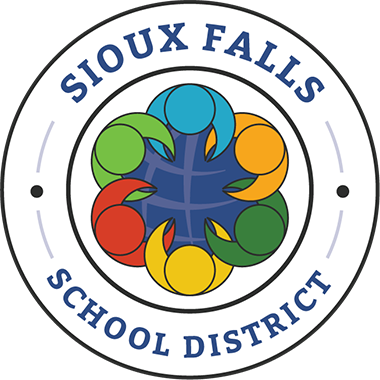English Language Arts (ELA) Curriculum
7th Grade
Language Arts (grade 7) courses build upon students’ prior knowledge of grammar, vocabulary, word usage, and the mechanics of writing, and include the four aspects of language use: reading, writing, speaking, and listening. Beyond emphasizing different uses for language, these courses may also include using language (particularly written text) to construct meaning and connections. The accelerated course will explore the 7th grade curriculum standards through higher depth of knowledge (DOK) levels and using text at higher lexile levels.
8th Grade
Language Arts (grade 8) courses build upon students’ prior knowledge of grammar, vocabulary, word usage, and the mechanics of writing, and include the four aspects of language use: reading, writing, speaking, and listening. Typically, these courses use various genres of literature to improve reading skills, and they link writing exercises for different purposes to those reading selections. Specific content depends upon state standards for grade 8. The accelerated course will explore the 8th grade curriculum standards through higher depth of knowledge (DOK) levels and using text at higher lexile levels.
English Language Arts
6th Grade
Language Arts (grade 6) courses build upon students’ prior knowledge of grammar, vocabulary, word usage, and the mechanics of writing, and include the four aspects of language use: reading, writing, speaking, and listening. These courses may emphasize the use of language for different effects, in different contexts, and for different purposes. Specific content depends upon state standards for grade 6.
7th Grade
Language Arts (grade 7) courses build upon students’ prior knowledge of grammar, vocabulary, word usage, and the mechanics of writing, and include the four aspects of language use: reading, writing, speaking, and listening. Beyond emphasizing different uses for language, these courses may also include using language (particularly written text) to construct meaning and connections. Specific content depends upon state standards for grade 7.
8th Grade
Language Arts (grade 8) courses build upon students’ prior knowledge of grammar, vocabulary, word usage, and the mechanics of writing, and include the four aspects of language use: reading, writing, speaking, and listening. Typically, these courses use various genres of literature to improve reading skills, and they link writing exercises for different purposes to those reading selections. Specific content depends upon state standards for grade 8.
Honors English Language Arts
6th Grade
Language Arts (grade 6) courses build upon students’ prior knowledge of grammar, vocabulary, word usage, and the mechanics of writing, and include the four aspects of language use: reading, writing, speaking, and listening. These courses may emphasize the use of language for different effects, in different contexts, and for different purposes. Honors ELA explores the standards through high depth of knowledge levels and uses text at high lexile levels.
7th Grade
Language Arts (grade 7) courses build upon students’ prior knowledge of grammar, vocabulary, word usage, and the mechanics of writing, and include the four aspects of language use: reading, writing, speaking, and listening. Beyond emphasizing different uses for language, these courses may also include using language (particularly written text) to construct meaning and connections. Honors ELA explores the standards through high depth of knowledge levels and uses text at high lexile levels.
8th Grade
Language Arts (grade 8) courses build upon students’ prior knowledge of grammar, vocabulary, word usage, and the mechanics of writing, and include the four aspects of language use: reading, writing, speaking, and listening. Typically, these courses use various genres of literature to improve reading skills, and they link writing exercises for different purposes to those reading selections. Specific content depends upon state standards for grade 8. The accelerated course will explore the 8th grade curriculum standards through higher depth of knowledge (DOK) levels and using text at higher lexile levels.
Reading Intervention
Basic Reading
Basic Reading (Read 180) supports students performing below proficiency in reading and need explicit and systematic intensive instruction in literacy. Instruction addresses the five components of reading which reinforce phonics and phonemic awareness with intensive emphasis on sentence fluency, vocabulary, and targeted comprehension skills. Instruction focuses on progression toward grade-level Reading standards within the state standards for English Language Arts.
Literacy Zone
Lit Zone supports students performing below proficiency in reading comprehension and who require explicit instruction in applying reading skills to grade-level content with an emphasis on informational text. Lit Zone includes explicit instruction in vocabulary, language and text structures, and verbal and written reasoning as a means to improve reading fluency and comprehension. Lit Zone teaches students to apply reading skills and strategies, moving students towards proficiency on grade-level reading standards within the state standards for ELA.
Reading Development
Reading Development supports students performing below basic or basic in reading proficiency and need explicit and systematic intensive instruction in foundational literacy. Instruction addresses the five components of reading with intense emphasis on phonics, phonemic awareness, and word fluency, along with embedded vocabulary and comprehension at students' instructional levels. Instruction focuses on progression toward grade-level Reading standards within the state standards for English Language Arts.
